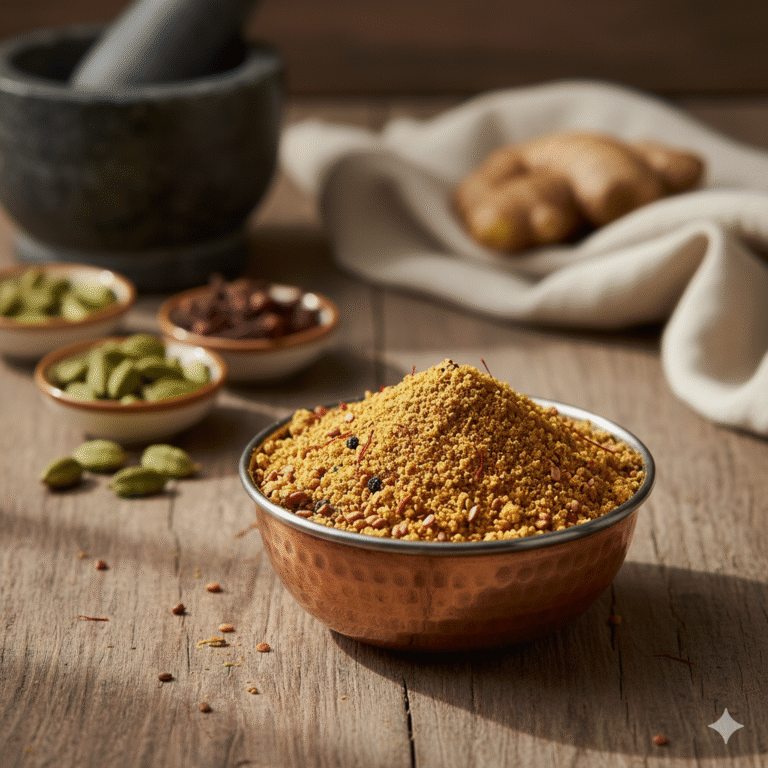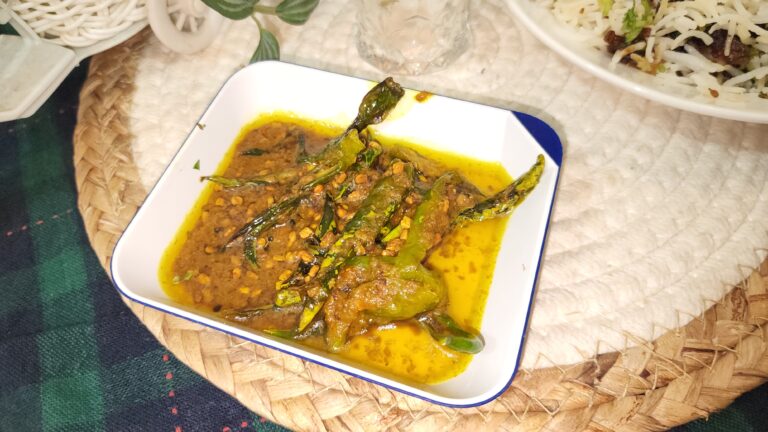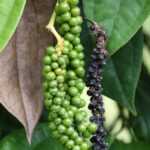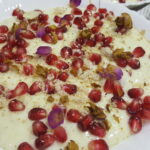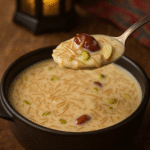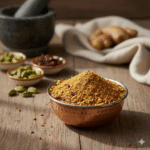The Best Fluffy Pancakes recipe you will fall in love with. Full of tips and tricks to help you make the best pancakes.
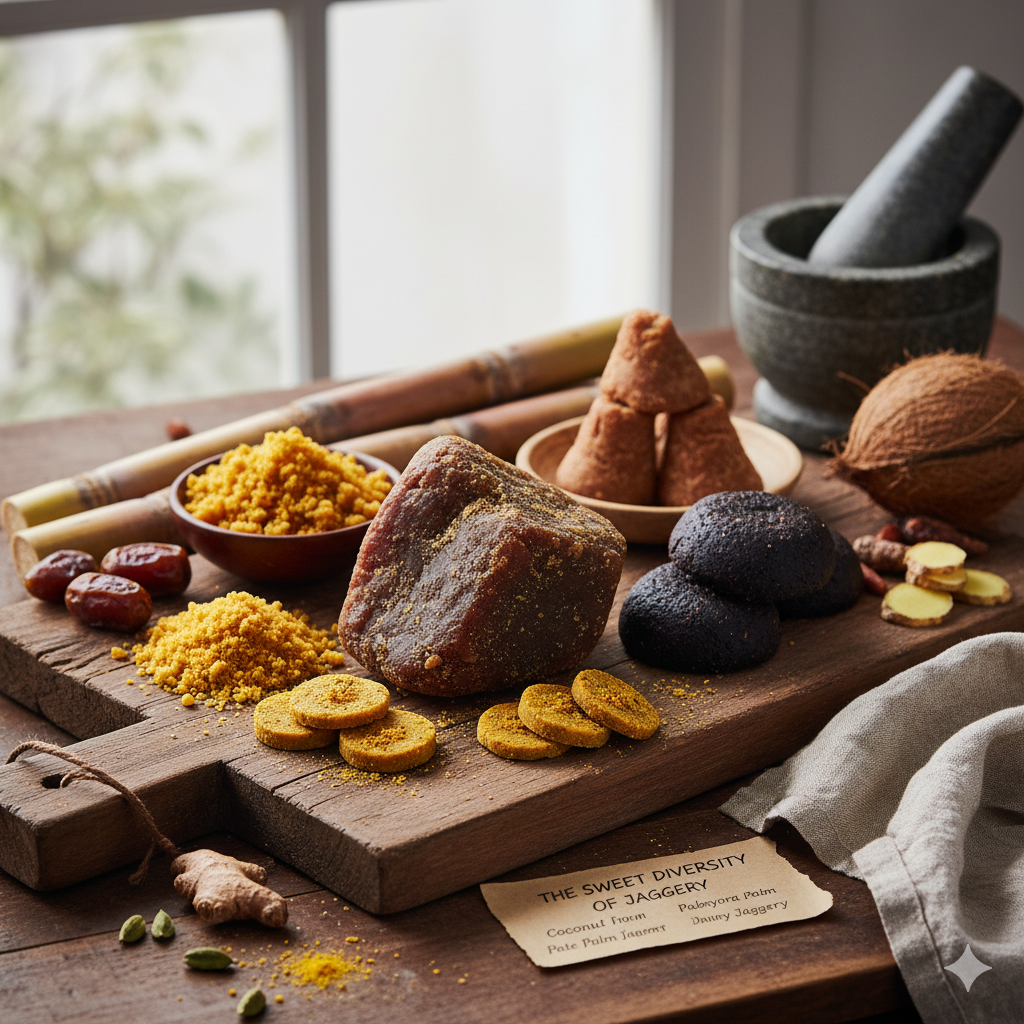
The scent of melting jaggery is the scent of a hundred different homes. For me, it takes me back to my childhood in Mombasa, Kenya, where the kitchen was a warm, fragrant place filled with my mother’s creations. The earthy, caramel-like aroma of gur was a constant, filling the air as she would patiently make family favourites. It wasn’t just a sweetener; it was a symbol of warmth and comfort, a key ingredient in everything from special occasion sweets to everyday snacks. I can still remember the rich flavours of malido during Eid, the melt-in-your-mouth texture of Golpapdi, the nutritious Katlu paak, and the savoury-sweet Gor na Thepla/Puri she would make.
This powerful, unrefined sweetener holds a special place not just in our memories, but across vast cultural landscapes. It’s found in the bustling markets of Mumbai, where vendors sell sticky, golden nuggets, and in the small villages of Kenya, where it’s known as Sukari Nguru. Its journey is a testament to shared traditions and a collective preference for wholesome, natural sweetness over refined sugar.
Today, I want to take you on a journey to explore the world of jaggery—to understand its different forms, discover where it comes from, and learn how to use it to bring a touch of sweet, nourishing history to your own kitchen. It’s a sweet legacy, passed down through generations, and a true testament to the simple pleasures of honest food.
The Earthy Elixir: Understanding the Different Types of Jaggery
Jaggery is a non-centrifugal cane sugar, meaning it is made without separating the molasses from the sugar crystals. This simple fact is what gives it its rich colour, complex flavour, and superior nutritional profile. While refined white sugar is essentially empty calories, jaggery is a powerhouse of minerals like iron, magnesium, and potassium.
Here are the most common types of jaggery you’ll find, each with its own unique character and uses:
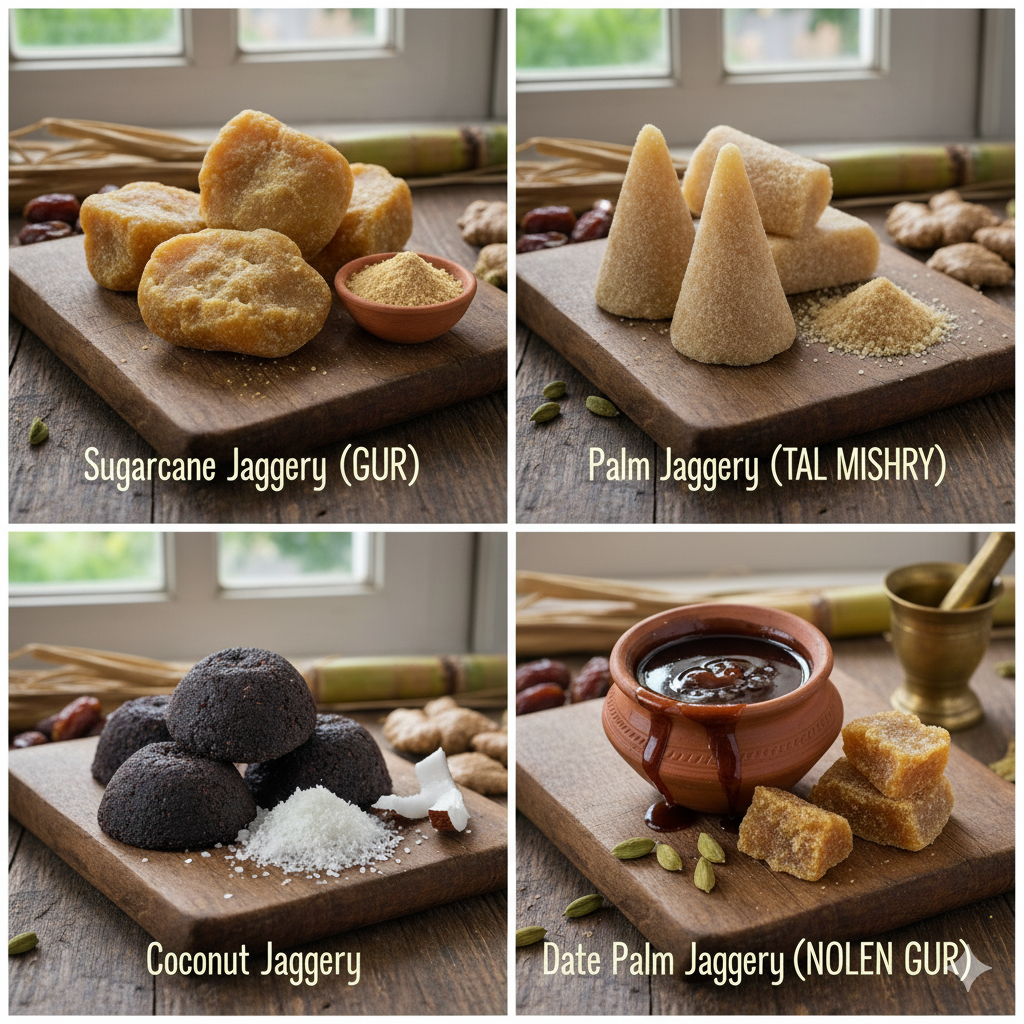
- Sugarcane Jaggery: This is the most prevalent form, made by boiling concentrated sugarcane juice. It ranges in colour from golden to a deep, dark brown, and its flavour can have subtle notes of molasses or honey. It is widely produced across India, with regions like Uttar Pradesh and Maharashtra being particularly renowned for their high-quality gur.
- Date Palm Jaggery (Nolen Gur): A winter delicacy primarily from West Bengal, India. Made from the sap of date palm trees, this jaggery has a deep, smoky, and almost chocolatey caramel flavour. It is often found in liquid form, known as Jhola Gur, and its solid form is called Patali Gur. It is a highly prized ingredient for traditional Bengali sweets.
- Palm Jaggery (Karupatti): Sourced from the sap of the toddy palm tree in southern India, this variety is often darker and has a more robust, earthy flavour. It is prized for its medicinal properties and is a staple in Ayurvedic preparations for its ability to help cleanse the respiratory system.
- Coconut Jaggery: Made from the sap of the coconut palm blossom, this jaggery has a more subtle, delicate sweetness. It is commonly found in coastal regions of India and Sri Lanka.
Jaggery in Kenya: A Special Connection
In Kenya, jaggery is a beloved local product, often called Sukari Nguru, which translates to “brown sugar” in Swahili. It is traditionally produced by small-scale farmers and is a testament to the country’s agricultural heritage. Kenyan jaggery is known for being incredibly pure and raw, often sold in large, dark blocks with a distinct, earthy aroma. It is a central ingredient in many local herbal concoctions and is used as a natural sweetener in teas and traditional porridges, highlighting its role as a practical and nourishing food source.
The Sweet Transformation: How Jaggery is Made
The process of making jaggery is a beautiful, rustic art form, usually practised in open fields near the sugarcane farms.
- Extraction: First, fresh sugarcane is crushed in large rollers to extract its juice.
- Clarification: The raw juice is then collected in large, shallow pans and heated over a fire. As it heats, impurities rise to the surface in the form of a froth, which is carefully skimmed off. Traditional producers may add vegetable-based clarifying agents (like okra extracts) to purify the juice further.
- Concentration: The clarified juice is then boiled for several hours until it thickens into a rich, golden syrup. This is the most crucial step, as the timing determines the final consistency.
- Cooling & Moulding: Once the syrup reaches the right consistency, it is poured into moulds or flat pans to cool and solidify. As it cools, it hardens into the familiar blocks or is scraped into a granular powder.
Pro Tips: Choosing and Using the Best Jaggery
- The Best Jaggery is Darker: Don’t be fooled by light-colored jaggery. A lighter colour often indicates chemical processing to remove impurities. The best jaggery is typically dark brown, as it retains more of its natural nutrients and minerals.
- Check for Purity: Pure jaggery should be hard and dry. If it is salty to the taste or feels wet, it may have impurities or a high moisture content.
- Store It Right: Jaggery can melt and become sticky in humid conditions. Store it in a cool, dry, and airtight container to maintain its hard texture and freshness.
- A Spoonful a Day: A small piece of jaggery after a meal is a traditional digestive aid, believed to activate digestive enzymes and cleanse the system.
Culinary Journey: Using Jaggery in the Kitchen
Jaggery is an incredibly versatile sweetener that can be used in both sweet and savory dishes, providing a rich depth of flavor that refined sugar cannot match.
- Desserts: It is the key to classic Bohra sweets like Golpapdi and Lachka, and forms the base for traditional Indian treats like chikki (peanut brittle) and til laddu (sesame seed balls).
- Everyday Cooking: A small amount of jaggery can be added to lentil dishes (daal) or vegetable curries to balance the spices and mellow out any acidity.
- Beverages: In winter, a simple cup of gur wali chai (jaggery tea) is a comforting drink. For a refreshing beverage, especially during Ramadan, Gol Sharbat is a popular drink made with jaggery water and basil seeds.
- Kenyan Porridges: Jaggery is often used to sweeten traditional Kenyan porridges like uji, providing a wholesome, energy-boosting breakfast.

